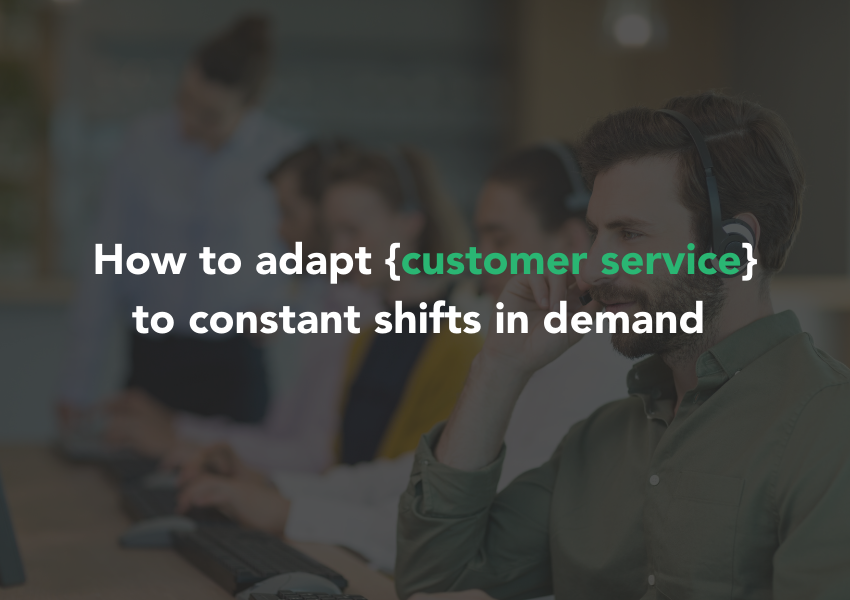How to adapt customer service to constant shifts in demand
- Share

3 ways businesses can maintain rock-solid customer service when the unexpected happens
When your business is still in its infancy, it’s relatively easy to deliver dedicated and effective customer support. That’s one of the reasons a lot of people like to do business with promising startups and smaller companies. There remains a widespread fear that larger operations can’t deliver the high level of customer service that today’s consumers expect. And, who can blame them, given how they’re spoiled for choice?
Much like the empires of old collapsed under their own weight as they grew, business growth comes with a parallel set of risks. When your reach is limited to just a handful of customers, you can easily remember all of them and nurture more personal relationships with them. But, as your company grows, customer support agents will soon be overwhelmed with requests. It won’t be long before your customers start looking elsewhere.
Fortunately, it doesn’t have to be this way. With the right mix of process and technology, you can scale customer support like any other operation. There are three key elements in scaling these operations:
- Automate everything that can be automated
- Provide a guided multi-step process
- Route tasks to the right place
Let’s take a deeper dive into the above:
#1. Automate self-service
For most companies, the vast majority of customer support requests concern issues which have been solved before. As such, there’s no point in your agents spending most of their time repeating themselves over and over. Moreover, the last thing customers want is to wait on hold until an agent becomes available.
Most customers prefer to help themselves if at all possible. Establish automated workflows for things like routine troubleshooting and resolving common problems. Help customers quickly find answers to their questions with AI-powered chatbots and smart search functions. Provide a community forum and knowledgebase where customers can support each other. However, remember that humans still have a critical role to play – customers should always be able to contact an agent if they can’t find a quick answer to their problem any other way.
Automating such a large range of processes might sound daunting, but it’s not as complicated as it sounds. The best practice is to start small in an iterative manner, using all available and suitable platform features to digitise and automate manual processes where possible. As with any area of digital transformation, the goal shouldn’t be to automate everything from the very beginning, but to plan, prioritise, and continuously improve.
#2. Provide a guided process
User experience is now a key driver of purchase decisions, and at no point is it more important than when a customer is trying to get support. Most of us have experienced the endless back and forth of poor customer support, where a general lack of guidance and consistency make it nigh impossible to find the right solution.
A guided process simplifies the customer’s experience and lets them find what they’re looking for faster. You can use data analytics to map their current actions and review that information to find opportunities for improvement. For example, if customers aren’t providing the details needed to resolve a particular problem, it might be necessary to provide additional forms and conditional fields. With a guided multi-step process that only asks for the information needed to solve a problem, customers can enjoy faster resolution times.
#3. Optimise task delegation
Automation is the holy grail of business scalability, but some organisations end up relying on it too much. Many of us have experienced the frustration of dealing with a chatbot or trawling through an online knowledgebase only to leave without answers.
Some problems require a human touch, and it’s essential that you assign the right people to the job. Fortunately, you can also automate task delegation and, in doing so, prevent agents from having to handle issues they’re not best equipped to deal with. With dynamic scheduling, you can automate the task assignment process based on factors like skill, priority, availability, and where relevant, travel time.
GuideVision helps you scale your customer support with automated workflows powered by ServiceNow. Contact us today to schedule a consultation.
Subscribe to our newsletter
Thank you!
You have successfully subscribed to our newsletter.
